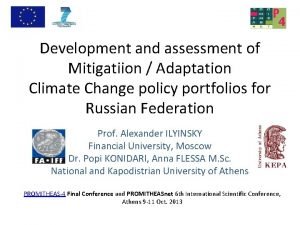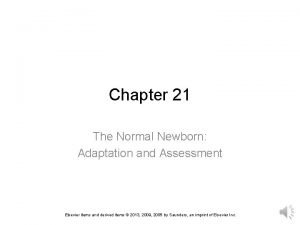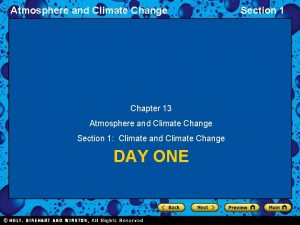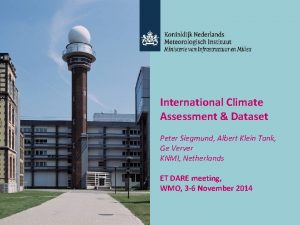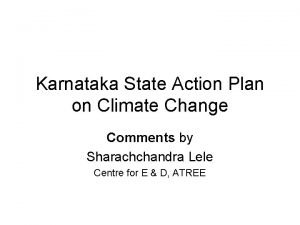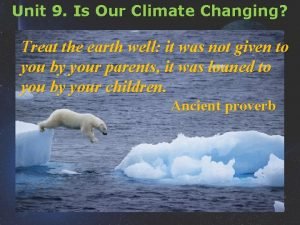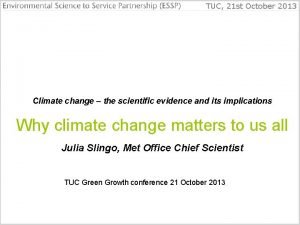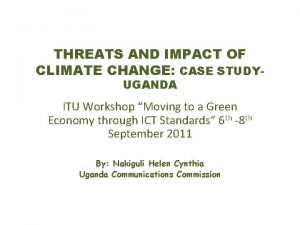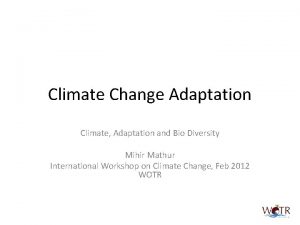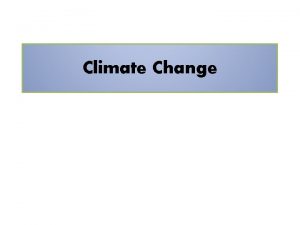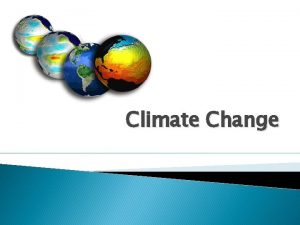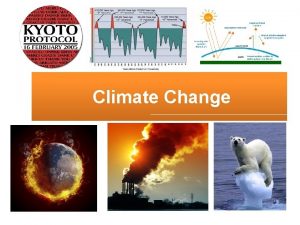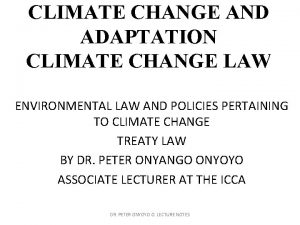Development and assessment of Mitigatiion Adaptation Climate Change













- Slides: 13

Development and assessment of Mitigatiion / Adaptation Climate Change policy portfolios for Russian Federation Prof. Alexander ILYINSKY Financial University, Moscow Dr. Popi KONIDARI, Anna FLESSA M. Sc. National and Kapodistrian University of Athens PROMITHEAS-4 Final Conference and PROMITHEASnet 6 th International Scientific Conference, Athens 9 -11 Oct. 2013

Promitheas 4 National Workshop - 1 st International Conference Climate Policy, Sustainable Development and Green Finance 20 -21 May 2013, Moscow, Russia (Financial University)

International IFF-KEPA team members • Prof. Alexander Ilyinsky • Dr. Alexander Didenko • Dr. Sergei Petropavlovsky • Dr. Popi Konidari • MSc. Inna Lukashenko • MSc. Anna Flessa

Russia: facts and figures • Area: 17, 098, 242 sq. km • Population: 142, 500, 482 (July 2013 est. ) • GDP (purchasing power parity): $2. 555 trillion (2012 est. ) • Climate: ranges from steppes in the south through humid continental in much of European Russia; subarctic in Siberia to tundra climate in the polar north; winters vary from cool along Black Sea coast to frigid in Siberia; summers vary from warm in the steppes to cool along Arctic coast

Russian energy: facts and figures (2012 est. ) • Electricity - production: • • • 1. 064 trillion k. Wh 4 Electricity - exports: 19. 14 billion k. Wh 8 Electricity - installed generating capacity: 223. 1 million k. W 4 Electricity - from nuclear fuels: 17. 2% of total installed capacity 14 Electricity - from RES: 0, 5% of total installed capacity 179 Crude oil - production: 10. 37 million bbl/day 1 Crude oil - exports: 4. 69 million bbl/day 2 Natural gas - production: 653 billion cu m 1 Natural gas - exports: 200. 1 billion cu m 1 CO 2 emissions from consumption of energy: 1. 634 bln. Mt 4

Data collection – how we collected and our sources • Roshydromet • UNDP • Federal State • UNEP Statistics Service • ERI RAS/REA • UNFCCC • World Bank • IFC • EBRD • FAO • European • IEA Commission • WWF

Developing BAU scenario • Focus on energy efficiency and less on Renewable Energy Sources • Remove all remaining cross‐subsidies from electricity pricing • Electricity tariffs for households will remain regulated • Increasing nuclear energy to 25% of energy production

Developing OPT scenario • Reduce energy intensity in 2020 by 40% of 2007 level • Target to double GDP in ten years • Goal to add at least 20000 MW of new generating capacity • Cooperation bonds between EU and Russia especially in the area of energy • Environmental issues

Developing PES scenario • Slower implementation of innovations, • Low GDP growth rate, • Severe climate change, • Bad demography • Reflect augmented set of Governmental policies, which implemented slower with worse results.

Results of the 3 scenarios according to LEAP

AMS assessment of the policy mixtures

Best policy mixture • For criterion of environmental performance, OPT offers better grade of all scenarios; • This could be interpreted as lack of regulation (driven, perhaps, by lack of motivation) of regulatory bodies to decrease environmental impact of Russian economy. • There is definitely great leeway for improving environmental performance of the economy through implementation of new policies, many of which are currently discussed.

Thank you for your attention and cooperation!
 Climate change 2014 mitigation of climate change
Climate change 2014 mitigation of climate change Mitigatiion
Mitigatiion Normal vital signs of newborn
Normal vital signs of newborn Climate change meaning
Climate change meaning Chapter 13 atmosphere and climate change section 1
Chapter 13 atmosphere and climate change section 1 Chapter 13 atmosphere and climate change
Chapter 13 atmosphere and climate change Eca&d
Eca&d Climate change paragraph
Climate change paragraph Karnataka state action plan on climate change
Karnataka state action plan on climate change What causes wind to blow brainpop
What causes wind to blow brainpop Unit 9 climate change
Unit 9 climate change Conclusion of climate change
Conclusion of climate change Youreuropemap.com
Youreuropemap.com Conclusion of climate change
Conclusion of climate change

